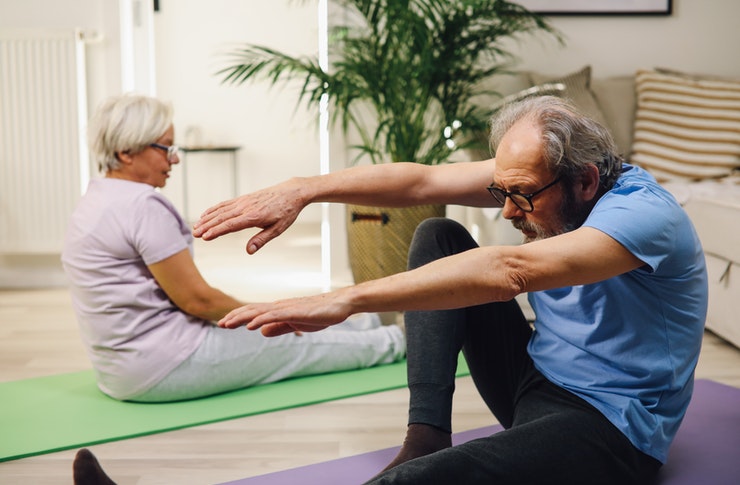Staying Active: Parkinson’s Friendly Exercises
Staying active with Parkinson’s friendly exercises can support mobility balance and flexibility. These routines are designed to match individual abilities and may include stretching guided movement and low-impact activities that align with physical therapy principles and safety guidelines.

Explore Movement Routines Designed for Parkinson’s
Movement routines for Parkinson’s patients are carefully crafted to address the specific motor symptoms associated with the condition. These programs typically incorporate rhythmic movements, large-amplitude exercises, and activities that challenge both cognitive and physical functions simultaneously. Rock Steady Boxing, for example, has gained recognition as an effective non-contact boxing program specifically designed for people with Parkinson’s. This approach focuses on agility, speed, hand-eye coordination, and cardiovascular fitness while providing a fun, engaging environment.
Dance therapy represents another excellent movement routine, with programs like Dance for PD offering structured sessions that combine music, rhythm, and creative expression. These classes help improve gait patterns, reduce freezing episodes, and enhance emotional well-being. Tai Chi and qigong also provide gentle, flowing movements that emphasize balance, coordination, and mindfulness, making them particularly suitable for individuals in various stages of Parkinson’s progression.
Learn Exercises That Support Balance and Strength
Balance and strength training form the foundation of effective Parkinson’s exercise programs. Specific exercises target core stability, leg strength, and postural control to reduce fall risk and maintain independence. Wall push-ups help maintain upper body strength while providing stability support. Step-ups using a sturdy platform can improve leg strength and simulate daily activities like climbing stairs.
Standing on one foot while holding onto a chair back challenges balance systems safely. Heel-to-toe walking, performed along a straight line with arms extended for balance, helps improve gait stability. Resistance band exercises offer adjustable strength training that accommodates varying energy levels and abilities. These exercises should be performed consistently, typically three to four times per week, with proper supervision when necessary.
Practice Guided Low-Impact Physical Activities
Low-impact activities provide cardiovascular benefits without placing excessive stress on joints or increasing fall risk. Water-based exercises, including aqua therapy and swimming, offer exceptional benefits for Parkinson’s patients. The buoyancy of water reduces joint stress while providing natural resistance for strength building. Pool walking, water jogging, and gentle aqua aerobics can improve cardiovascular health while supporting mobility.
Stationary cycling, whether traditional or recumbent, provides excellent cardiovascular exercise while maintaining stability. Many fitness centers offer specialized cycling programs for individuals with movement disorders. Yoga classes adapted for Parkinson’s focus on gentle stretching, breathing exercises, and modified poses that accommodate balance challenges. These activities can be modified based on individual capabilities and disease progression.
Discover Techniques for Improving Daily Mobility
Daily mobility techniques focus on practical movements that translate directly to everyday activities. Practicing sit-to-stand transitions from various chair heights helps maintain independence in daily living. Turning techniques, such as taking multiple small steps instead of pivoting, can reduce balance challenges and prevent freezing episodes.
Voice activation exercises, often called LSVT LOUD techniques, coordinate breathing and movement while improving communication abilities. Large, exaggerated movements throughout daily activities help counteract the tendency toward smaller, constrained motions. Practicing dual-task activities, such as walking while carrying objects or talking, helps improve cognitive-motor integration essential for daily functioning.
Stay Active With Structured Movement Plans
Structured movement plans provide consistency and progression essential for maintaining benefits over time. A typical weekly plan might include three days of strength and balance exercises, two days of cardiovascular activity, and daily flexibility work. Morning routines often work best, as many individuals with Parkinson’s experience better symptom control earlier in the day.
| Program Type | Provider | Key Features | Typical Cost Range |
|---|---|---|---|
| Rock Steady Boxing | Local RSB affiliates | Non-contact boxing, group classes | $60-120/month |
| Aqua Therapy | Physical therapy clinics | Water-based exercises, professional supervision | $80-150/session |
| Dance for PD | Community centers, studios | Music-based movement, creative expression | $15-30/class |
| Physical Therapy | Healthcare facilities | Personalized assessment, medical supervision | $100-200/session |
Prices, rates, or cost estimates mentioned in this article are based on the latest available information but may change over time. Independent research is advised before making financial decisions.
Building Long-Term Success
Long-term success requires adapting exercise programs as the condition progresses. Regular consultations with healthcare providers, including neurologists, physical therapists, and exercise physiologists, ensure programs remain appropriate and beneficial. Keeping exercise logs helps track progress and identify patterns in energy levels and symptom management.
Community support through group exercise classes provides social interaction alongside physical benefits. Many participants find that exercising with others who understand similar challenges creates motivation and accountability. Family members and caregivers can also learn simple exercises to provide ongoing support and encouragement.
The key to successful exercise with Parkinson’s lies in consistency, safety, and gradual progression. Starting slowly and building intensity over time allows the body to adapt while minimizing injury risk. With proper guidance and commitment, staying active can significantly enhance quality of life and potentially slow disease progression for individuals living with Parkinson’s disease.
This article is for informational purposes only and should not be considered medical advice. Please consult a qualified healthcare professional for personalized guidance and treatment.




